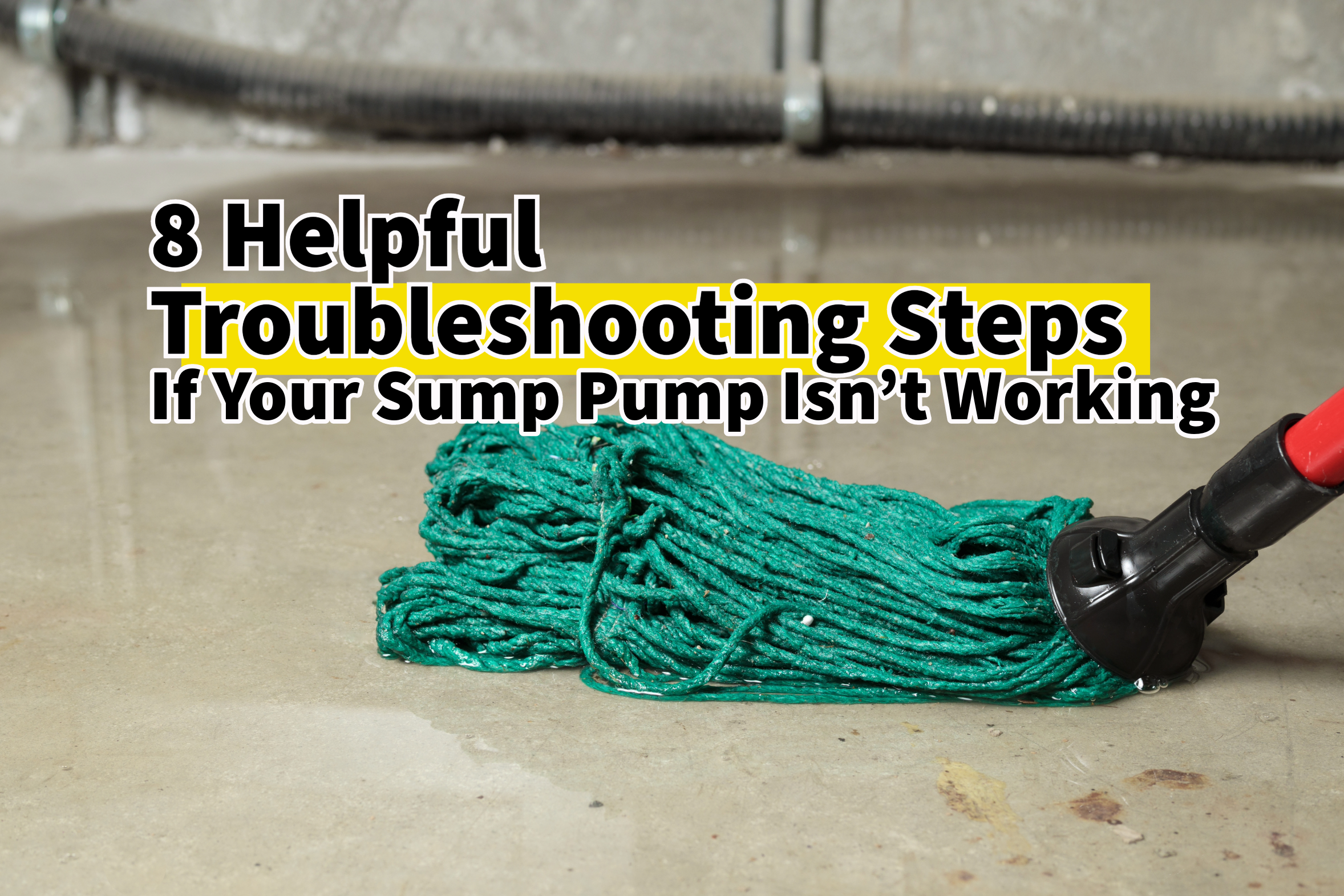Is your sump pump no longer functioning? Given the recent weather, this is not an uncommon occurrence for us Ohioan residents. With snow melting and constant rainfall during the winter season, sump pump problems are at their peak. Bear in mind, that if your sump pump has stopped working, it’s crucial not to delay. We strongly advise getting it sorted out as soon as possible as it can lead to flooded basements, water damage, and other undesirable consequences. The safety and well-being of our customers are of utmost importance to us. Sump pumps are specifically designed to efficiently remove excess water through the discharge pipe, effectively diverting excess water away from the foundation of your home. So, a malfunctioning sump pump can quickly cause basement flooding and lead to various other catastrophic issues. Fortunately, we have pieced together a comprehensive list in case you have found yourself in such a situation. However, you don’t have to wait for a problem to arise. Take a proactive approach by familiarizing yourself with the top 8 common troubleshooting steps for a malfunctioning sump pump from your favorite Five Star Dayton Plumbing experts.
DON’T FORGET TO CHECK THE FOLLOWING:
- The Power Supply Check: Power outages are a common cause of sump pump malfunctions. If your sump pump has stopped working, the first step is to check if it’s plugged in and receiving power. You can also test the outlet with another device to determine if the outlet is the issue. Another option is to restart the pump by unplugging and plugging it back in. Although this may only provide a temporary solution. So, it’s important to keep in mind that it may not be a long-term fix.
- The Pump Motor Check: Try to listen for any unusual noises coming from the pump motor. If the motor is not running, please check the circuit breaker and reset it if necessary.
- The Pump Basin Check: Now, it is essential to inspect both the lid and the inside of the sump pump. Perhaps there is a clog causing the issue. Take a moment to examine the sump pump basin for any debris, dirt, or ice accumulation. If you come across any, make sure to remove it promptly to prevent any obstructions to the pump.
- The Float Switch Check: Proceed to inspect the float switch to ensure proper movement. Take note of any debris that requires clearing, and examine the float switch for unhindered motion. A stuck or frozen float will undoubtedly hinder the pump’s intended activation.
- The Check (or Overflow) Valve Check: Ensure proper installation of the check valve. It’s important to check for any debris blockage that may hinder its functionality. Additionally, you should try inspecting the pipe above the check valve for potential clogs that could impede its operation. A properly functioning check valve will effectively prevent water from flowing back into the sump pit.
- The Discharge Pipe Check: If your basement is flooded and the water isn’t being discharged away from your home, it’s highly likely that the discharge pipe is clogged. So, your main focus should be on locating and checking the discharge pipe.
- The Weeping Hole Check: One important aspect to check is the weeping hole. Sump pumps typically have a small hole on the discharge pipe that serves the purpose of releasing air and ensuring proper functionality. If this weeping hole becomes blocked or clogged, the pump will not operate as intended. In such cases, it is necessary to clear the clog in the weeping hole to restore normal operation.
- The Pump Size Check: If a sump pump is not properly sized for your space, it won’t be able to handle the high volumes of water that come its way. If you’ve experienced this issue more than once, it might be time to consider an upgrade to prevent it from happening repeatedly.


